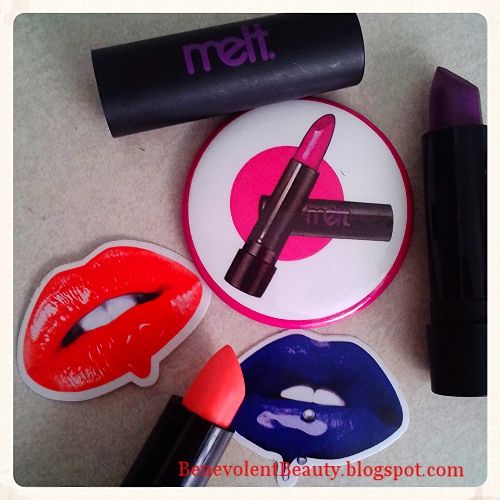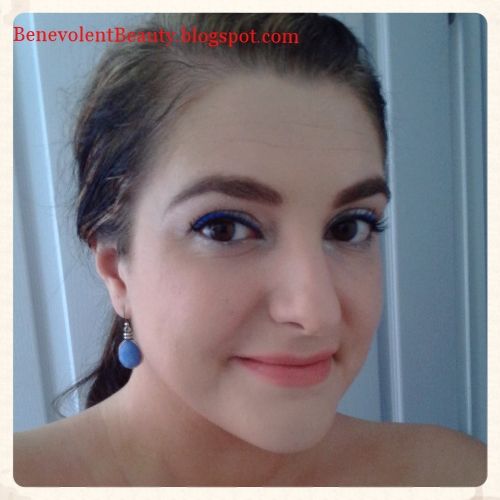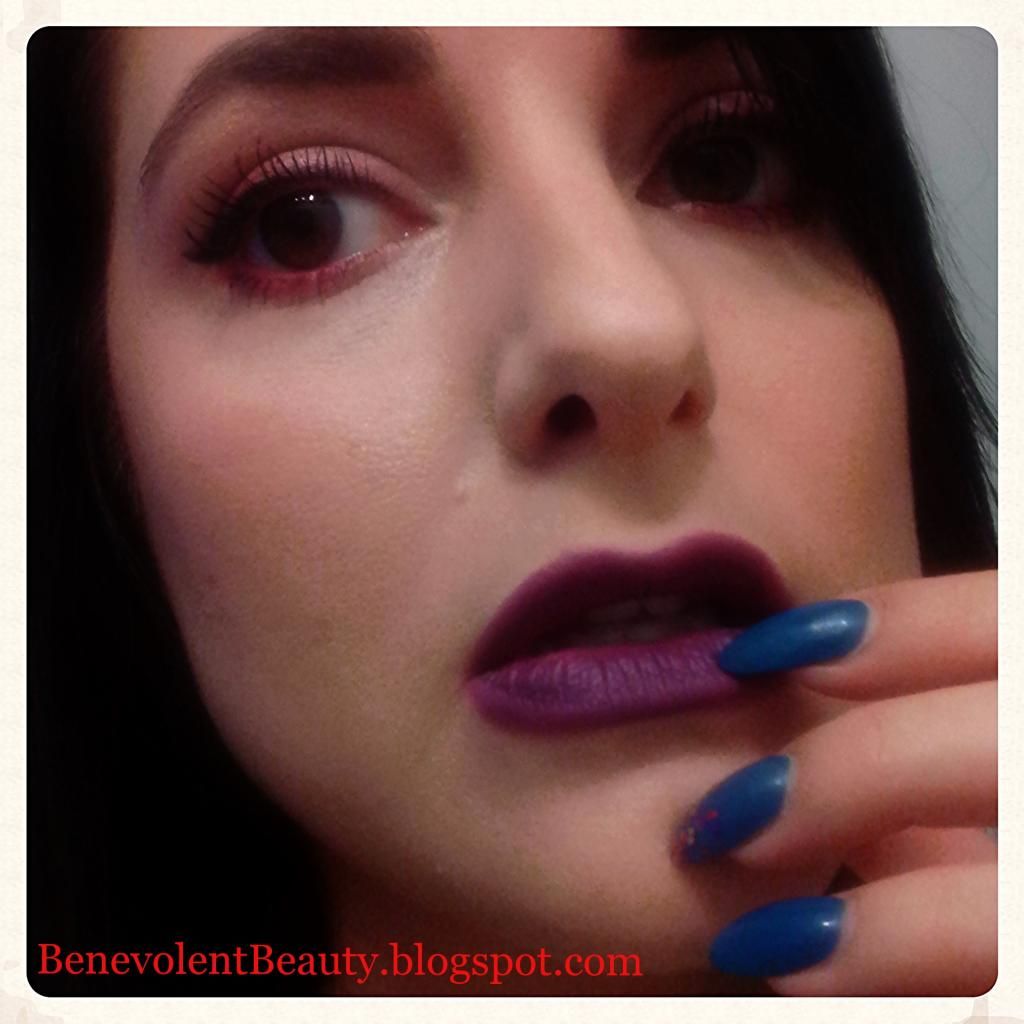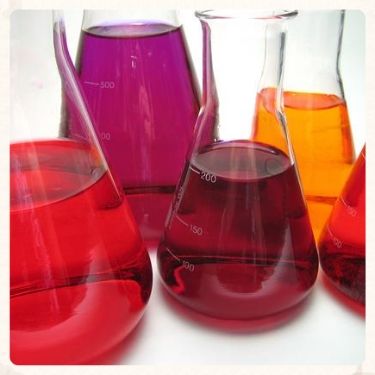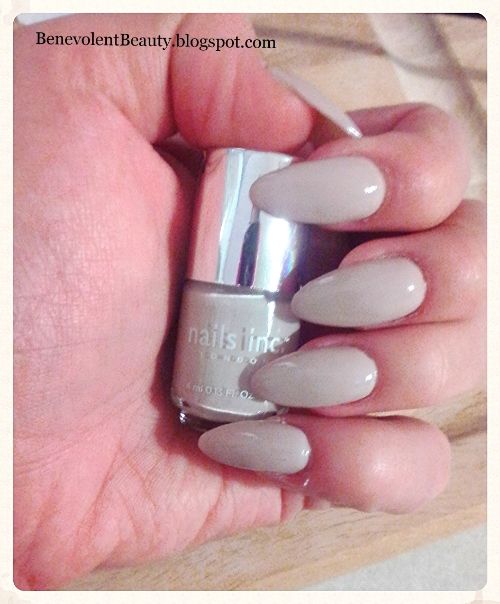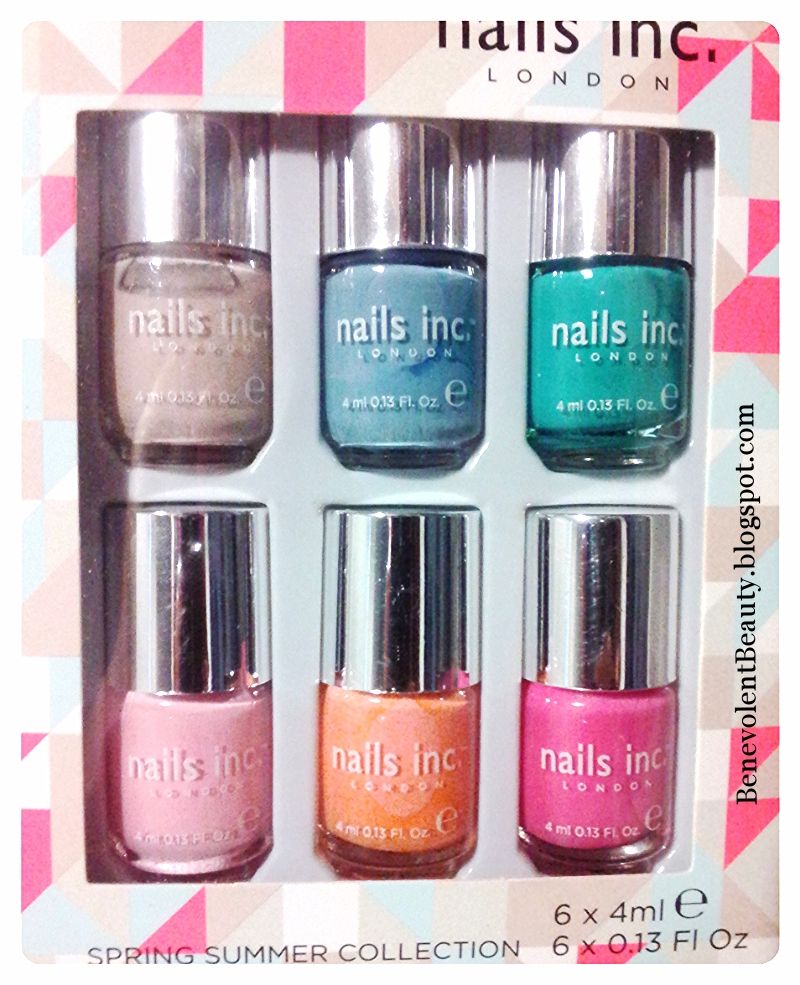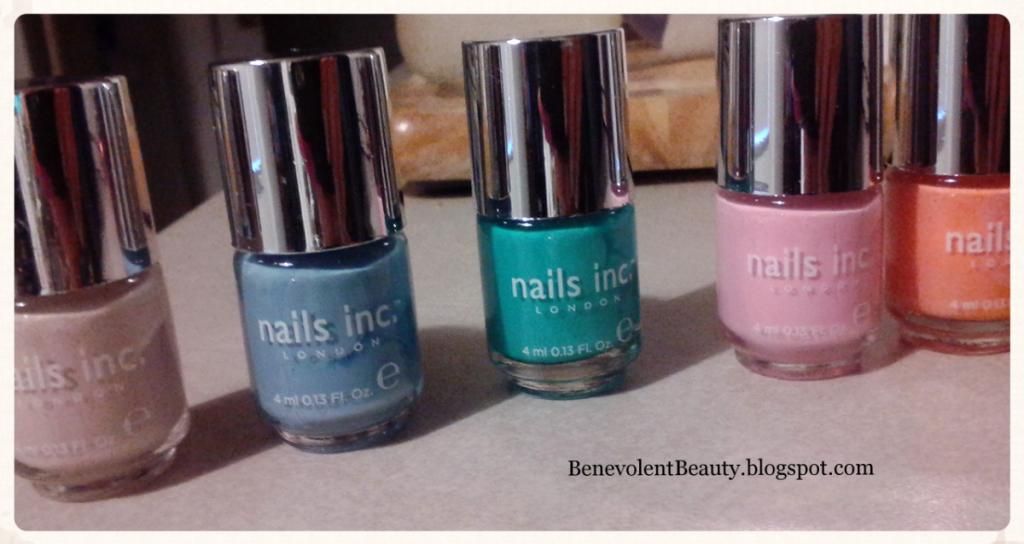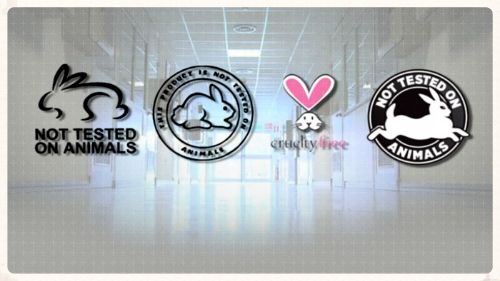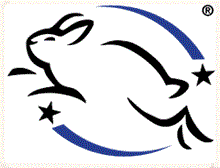Cruelty-free cosmetics reviews, tutorials and more. Find new brands and cult classics you'll love.
Friday, June 27, 2014
Tutorial: Self-Tanning Fixes 101
Summer is here and I don't have to tell you how important a golden glow can be to your look. It's slimming, it evens out your skin tone and blurs imperfections, and it makes you look healthy. Chances are you've already tried self tanning at home, but perhaps your results weren't ideal. With a few quick fixes to common self tanning woes, you'll get the perfect shade of bronze without the hassle.
Tuesday, June 24, 2014
Review: Melt Cosmetics
This past spring season I became absolutely infatuated with matte lips. From lip creams and stains, to opaque lipstick; any color, as long as it was perfectly UN-shiny. I did plenty of searching, plenty of research, and of the many options out there, I was intrigued by melt cosmetics. "Ultra-matte. Bold. Radioactive." It sounded like the perfect motto for a cosmetics brand. As if that weren't enough, all of their lipsticks are vegan, cruelty-free, gluten free and paraben free. Melt offers twelve unique shades from pinks that would make Barbie envious, to a curious shade of slate gray - all matte, all gorgeous.
I purchased two of the company's twelve shades to try when they were offering a free-shipping promo: Summer! - a soft, creamsicle orange, and By Starlight - a deep, dark true purple.
Above: Summer! The photo is not retouched or filtered, and it was taken in natural light - no flash. I did not use any primer or lip liner.
Above: By Starlight. The photo is not retouched or filtered, and it was taken in natural light - no flash. I did not use any primer or lip liner.
I purchased two of the company's twelve shades to try when they were offering a free-shipping promo: Summer! - a soft, creamsicle orange, and By Starlight - a deep, dark true purple.
Above: Summer! The photo is not retouched or filtered, and it was taken in natural light - no flash. I did not use any primer or lip liner.
Above: By Starlight. The photo is not retouched or filtered, and it was taken in natural light - no flash. I did not use any primer or lip liner.
The Pros:
If you are looking for creamy, super opaque lipstick, you want Melt. The shades cover completely and offer rich, deep pigments. Melt does not offer lip liners at this time, but I didn't find myself needing a liner. I had no bleeding or feathering around my lips - this stuff REALLY stayed in place, particularly By Starlight. Both lipsticks applied beautifully right out of the tube so reapplication (although rarely necessary) was a cinch. Some smaller retailers don't offer refunds, but Melt has a fine policy on returns. I didn't need to use it, but it is nice to know it's available.The Cons:
Melt only offers lipsticks, twelve shades in total. If you are a fan of lip gloss, or are seeking a different formula, you won't find it. They do one thing, but they do it well. Depending on your budget, $19 per lipstick can be pricey; I'd love to see them offer more promotions and sales in order to attract new buyers (or those wanting to stock up, like me...). Finally, popular shades sell out... FAST. The only way to determine when colors will be restocked is to sign up for Melt's mailing list and wait.Application Tips:
As with all matte lipsticks, you don't have the benefit of shimmery pigments and an oily, glossy texture to help even things out. Before you apply, exfoliate your lips. I use a warm, damp washcloth and rub in a circular motion until smooth. You may also want to look into a good primer if you find flakiness or dryness a problem. Lastly, these shades allow for excellent blending so you can create custom colors. Too fun!Friday, June 20, 2014
FYI: 5 Common Animal By-Products You Didn't Know Were There
So, you're doing your part and checking your companies out to be sure you're buying cruelty-free products. Hooray! However, as you may have read (see my earlier post on cosmetics labeling issues) "cruelty-free" is not as all-inclusive as it seems. Another concern plagues the cruelty-free beauty lover: hidden animal by-products. Although listed in the ingredients, most of us don't know exactly what we're looking at. We can't pronounce it, we've never heard of it, we don't know where it comes from - it seems quite daunting, then, to weed out what we don't want to put on our shopping lists.
This list is far from exhaustive, but should help get you familiar with common ingredients you may be staring down the next time you're reading your labels. Oh, and speaking of labels, "naturally sourced" is another term you should become familiar with. As with many other phrases that lack any legally enforced definition, be advised that "naturally sourced" ingredients does not mean plant derived or plant based.
How to spot it: Look for ingredients that read "crimson lake," "cochineal," or "natural red 4."
How to avoid it: Back in 2006, the FDA considered requiring products that contained carmine to call it just that: carmine. They were also considering requiring manufacturers to list that the product was insect-based. Needless to say, that did not go over well and the FDA ultimately bailed on the potential requirement. However, if you see "cochineal extract" or "carmine" listed, consider this code for insect-based.
How to spot it: Look for additive number "E904," "resinous glaze," and "confectioner's glaze" (in food).
How to avoid it: The ingredient "Zein" is a corn based alternative to shellac. If you find shiny products like lipsticks, glosses, etc., check to see if the product is vegan (no animal by-product use) or see if the shine is derived from another source, such as "Zein."
How to spot it: Lanolin is often listed as is: lanolin or lanolin oil. However, look for "lanosterols," "triterpene," "lanogene," or "laneth."
How to avoid it: Any time you see "sterols" listed, be wary of lanolin. If the ingredients state "plant sterols" it is a good indication that the oily substance is coming from plants. Since lanolin is generally used as an emollient, look for plant based oils like coconut oil and olive oil instead.
How to spot it: Guanine, like lanolin, is labeled as is. You may also see "hypoxanthine" or "2-aminohypoxanthine."
How to avoid it: "Mica" is a common mineral used to create that glittery effect we all know and love. "Bismuth" and "sericite" are other alternatives to look for when you see something shiny. If you have a sensitivity to mica, seek out "titanium dioxide" or "zinc oxide" which are common substitutes. Mica treated with "methicone" is another great way to avoid mica sensitivity AND guanine - win, win.
How to spot it: If it is apitoxin you're looking to avoid, watch out for "melittin," "apamin," and "adolapin."
How to avoid it: Fortunately (or perhaps unfortunately, depending on how you look at it) the makers of "bee venom" cosmetics and products are proudly touting the ingredient. Alternatives are easy to find, mostly herbs and spices that produce that tingly heat sensation: peppermint, cinnamon and menthol are all readily available.
This list is far from exhaustive, but should help get you familiar with common ingredients you may be staring down the next time you're reading your labels. Oh, and speaking of labels, "naturally sourced" is another term you should become familiar with. As with many other phrases that lack any legally enforced definition, be advised that "naturally sourced" ingredients does not mean plant derived or plant based.
Carmine
What it is: In a nut-shell, ground up insect bodies. Carmine creates a red coloring and is used as a dye. To create carmine, insect bodies are ground up and boiled to extract the carminic acid and various further chemical processes create color variations.How to spot it: Look for ingredients that read "crimson lake," "cochineal," or "natural red 4."
How to avoid it: Back in 2006, the FDA considered requiring products that contained carmine to call it just that: carmine. They were also considering requiring manufacturers to list that the product was insect-based. Needless to say, that did not go over well and the FDA ultimately bailed on the potential requirement. However, if you see "cochineal extract" or "carmine" listed, consider this code for insect-based.
Shellac
What it is: More bugs! It is actually an excretion of the female laccifer lacer bug and comes in various colors. It is used in cosmetics and hair products to provide shine, such as in hair spray or nail polish. If you're concerned about the environmental impact, The Vegetarian Resource Group estimates that 300,000 lac bugs are killed in the production of just 2.2 pounds worth of lac resin.How to spot it: Look for additive number "E904," "resinous glaze," and "confectioner's glaze" (in food).
How to avoid it: The ingredient "Zein" is a corn based alternative to shellac. If you find shiny products like lipsticks, glosses, etc., check to see if the product is vegan (no animal by-product use) or see if the shine is derived from another source, such as "Zein."
Lanolin
What it is: The word "lanolin" is actually from the Latin word "lāna" which means "wool" - "oleum" means "oily birth." Put that all together and you get an oily substance secreted by the oil glands of sheep. Although sheep are not usually killed to obtain the product, improper shearing of sheep has been the cause of death, disfigurement, pain and trauma in these animals.How to spot it: Lanolin is often listed as is: lanolin or lanolin oil. However, look for "lanosterols," "triterpene," "lanogene," or "laneth."
How to avoid it: Any time you see "sterols" listed, be wary of lanolin. If the ingredients state "plant sterols" it is a good indication that the oily substance is coming from plants. Since lanolin is generally used as an emollient, look for plant based oils like coconut oil and olive oil instead.
Guanine
What it is: Used to create a shimmery effect, guanine is extracted from fish scales and is most commonly found in nail polish. It's also used in eye shadows and skin care creams and serums.How to spot it: Guanine, like lanolin, is labeled as is. You may also see "hypoxanthine" or "2-aminohypoxanthine."
How to avoid it: "Mica" is a common mineral used to create that glittery effect we all know and love. "Bismuth" and "sericite" are other alternatives to look for when you see something shiny. If you have a sensitivity to mica, seek out "titanium dioxide" or "zinc oxide" which are common substitutes. Mica treated with "methicone" is another great way to avoid mica sensitivity AND guanine - win, win.
Apitoxin
What it is: Ever been stung by a bee? Then you have experienced the irritation and inflammation associated with apitoxin, or bee venom. It is believed that apitoxin increases blood flow and creates a plumping effect, so it is used in various skin care products and lip balms/glosses designed to plump lips/skin. The biggest concern for cruelty-free beauty lovers is that, once a bee stings, it dies. Recent findings suggest that bees are already in serious trouble as their numbers decline from pesticide usage and declining habitats.How to spot it: If it is apitoxin you're looking to avoid, watch out for "melittin," "apamin," and "adolapin."
How to avoid it: Fortunately (or perhaps unfortunately, depending on how you look at it) the makers of "bee venom" cosmetics and products are proudly touting the ingredient. Alternatives are easy to find, mostly herbs and spices that produce that tingly heat sensation: peppermint, cinnamon and menthol are all readily available.
Monday, June 16, 2014
Review: Eslor Soothing Refiner & Cleanser
When it comes to facial cleansers, I might as well be Goldilocks: I can never find the cleanser that is "just right." I consider my skin combination dry, where my cheeks can stay dry and even flaky, yet I can end up with an oil slick across my forehead. For me, the perfect cleanser has to remove makeup, suck up the oil so I FEEL the clean, but prevent the tightness and dryness you can often get when you rinse. Some cleansers left my skin feeling greasy, others left my skin dry and visibly tight.
Once upon a time, there was Eslor skin care. Created by a pharmacologist for his wife who, like me, was seeking a natural skin care line, Eslor offers aloe based products for various skin needs. If you've checked the labels on your cleanser, you'll probably find a plethora of ingredients. However, Eslor is being praised for what is NOT in it. Instead of harsh cleansers like sodium lauryl sulfate, there is almond meal, earth kaolin and seaweed extract which help suck up dirt while leaving skin moisturized. Eslor's Soothing Refiner and Cleanser draws out impurities while cleaning surface dirt away. Aloe soothes red, irritated skin while glycerin and hops are natural moisturizers. With only a handful of ingredients, this cleanser proves less is more.
The Pros:
Finally! I've discovered the perfect balance; my face feels clean yet very soft. Even without immediately applying a moisturizer, this low foaming gel is a combination cleanser and toner in one step. I've noticed my skin is smoother after about a week of use, too. There's no fragrance or dyes, so this could be an excellent option for sensitive skin. In addition, there are no harsh cleansers, no parabens, no sodium lauryl sulfate and no sodium lauryl ethel sulfate (both rough cleansing agents.) This is the first cleanser I have found that has actually improved my skin without any additional product use!The Cons:
At $32 for a 2 ounce bottle, it isn't a budget-friendly option for some. It cleans well, but may not offer enough oil control throughout the day for individuals with particularly oily skin. Finally, because this cleanser is designed to draw out dirt and oil deep within your pores, you may notice a pimple or two in your first week or so of use. (This is common with face masks and products with kaolin clay, which is a natural detoxifying agent that may bring impurities to the surface.)This truly is a high quality cleanser and I can only imagine how effective it would be combined with Eslor's other skin care products. You can receive free samples with purchase on the Eslor website and as a bonus, there are men's skin care products as well. It's worth a look.
Wednesday, June 11, 2014
Review: Nails Inc.
For much of my young adulthood, nail polish was all the same. We weren't readily aware of dangerous chemicals and the only difference from one brand to the next was the range of colors produced. Enter today's world of nail polish: varying formulas, fragrances, the introduction of UV gel cured polish - lots of changes. Enter Nails Inc. The company launched in England back in 1999, but is only now becoming a go-to brand in the U.S. Nails Inc. offers an extremely diverse line of polishes from leather to latex, feather to fiber optics - there is a finish for everyone and then some.
The Nails Inc. Spring Summer Polish Collection caught my eye immediately due to the extremely wearable yet fashion forward shades. With 3 creme shades and 3 neon shades, there is a little something for everyone. I have been searching for truly opaque, nude and powder-puff soft pastels and, lucky me, I found them. This kit of adorable minis - with full size brush so painting is not difficult - was a reasonable $25. Full size bottles go for about $11 each.
Colors (left to right): colville mews, little george street, william mews, princess gate, bruton lane (Not pictured, but above at bottom right): sloane street
The Pros:
Even the palest shades cover completely with two coats. None of the polishes contain any mica or glittery shine of any kind. These are not matte finish, but would likely look amazing if given a matte top coat. The shade I am wearing (pictured at top) is two coats of colville mews and one coat of clear top coat. I have acrylic nails, so most all polishes last a ridiculously long time. However, applied to my toe nails, Nails Inc. polish is chip resistant between pedicures.The Cons:
It can be tricky to get milky shades to apply evenly, particularly on natural nails. There can be an issue with streaking. However, I found that all of those issues can be controlled by applying a thicker second coat than you might usually. Also, be sure to give the polish a good thirty seconds or more before applying your top coat.This is a wonderful kit to buy if you're looking to try something new. The colors are chic and fun - I get tons of compliments on the nude polish (colville mews) alone. There is no shortage of shades and styles to choose from; be sure to visit the Nails Inc. site and gawk in awe.
Friday, June 6, 2014
FYI: Cruelty-Free and Legalese
Cruelty-free beauty is not a new concept. Most of you already have seen the horrific images of rabbits with oozing sores, or rats that have been blinded with chemicals. But what's the real deal with cruelty-free products? First, some truth about labeling and what truly constitutes "cruelty-free":
Cruelty-Free - What It Is and Isn't:
The beauty industry cannot really decide what constitutes a truly cruelty-free product. However, organizations such as PETA, the Humane Society of the United States and the Leaping Bunny Program adopted by the Coalition for Consumer Information on Cosmetics (CCIC) agree that cruelty-free products are not tested on animals. This generally includes not only testing of the finished product, but testing of any of the products ingredients.- Cruelty-free does not mean that the product is vegan: containing no animal products of any kind including eggs and dairy.
- Cruelty-free does not mean a product is organic: generally meaning products that were grown or produced without the use of chemical fertilizers, pesticides, antibiotics or growth hormones.
- Cruelty-free does not mean the product is fair trade: an organized social movement to better the lives of farmers by paying them fairly for their goods while encouraging sustainable farming practices.
Cruelty-Free and the Law:
Cruelty-free is a label that can mean less than - or greater than - standards are applied. Because there is no legal standard in the U.S. to define "cruelty-free", companies can use the label to mean just about anything: the label can imply that the final product has not been tested on animals, but certain ingredients in the product were. It can mean that the manufacturer did not test on animals, but the supplier did the testing instead. It can also mean that the manufacturer relied on tests done in foreign countries which laws are not applicable here in the U.S. Sadly, because animal testing is not prohibited in the U.S., the law is vague where the "cruelty-free" label is concerned.80 countries still allow animal testing today, according to the Humane Society of the United States. The U.S. does not require animal testing, but does not ban it, either. Some countries like China and Brazil do require animal testing. In 2014, China determined that products being imported into the country - U.S. companies are included - must be tested on animals. Therefore, although a company here in the U.S. may claim that their products are not tested on animals, if said company is selling in China, then that company is not cruelty-free.
How to Buy:
It's surprising to most consumers how confusing, not to mention unclear, cruelty-free shopping really is. So what's a consumer to do? First of all, get familiar with the organizations and projects that are the most stringent when it comes to animal safety and welfare.- The Leaping Bunny Program ensures that products with the leaping bunny label have not had any new animal testing in any phase of development, from the suppliers to the manufacturers. The CCIC requires all companies utilizing their label to undergo a free analysis that ensures there is no animal testing involved and that the product is up to snuff. When you see the leaping bunny logo (directly above) you can feel pretty secure knowing that you're getting a cruelty-free product.
- PETA provides an up-to-date list of companies and products that are cruelty-free. Think of it as a "Google" for cruelty-free products. You simply plug in the name of the company, or you can view lists of companies that do engage in animal testing, and even view companies that are working to change regulations to better animal welfare. Click here to check it out.
- On the go? If you need a quick guide while shopping, there's an app for that. Cruelty-Free by Symbiotic Software is the CCIC's app that lists over 200 cruelty-free U.S. and Canadian companies. Animal-Free is an app designed to help you determine if there are hidden animal ingredients in products. This app is particularly helpful if you're looking for vegan products. Choose Cruelty Free is an Android powered app that offers lists of cruelty-free and vegan products. Lastly, the PETA app is everything animal friendly. You can view news updates, donate, and of course, find vegan and cruelty-free products galore.
Still have questions? Feel free to e-mail me: benevolentbeautyblog@gmail.com
Subscribe to:
Comments (Atom)

